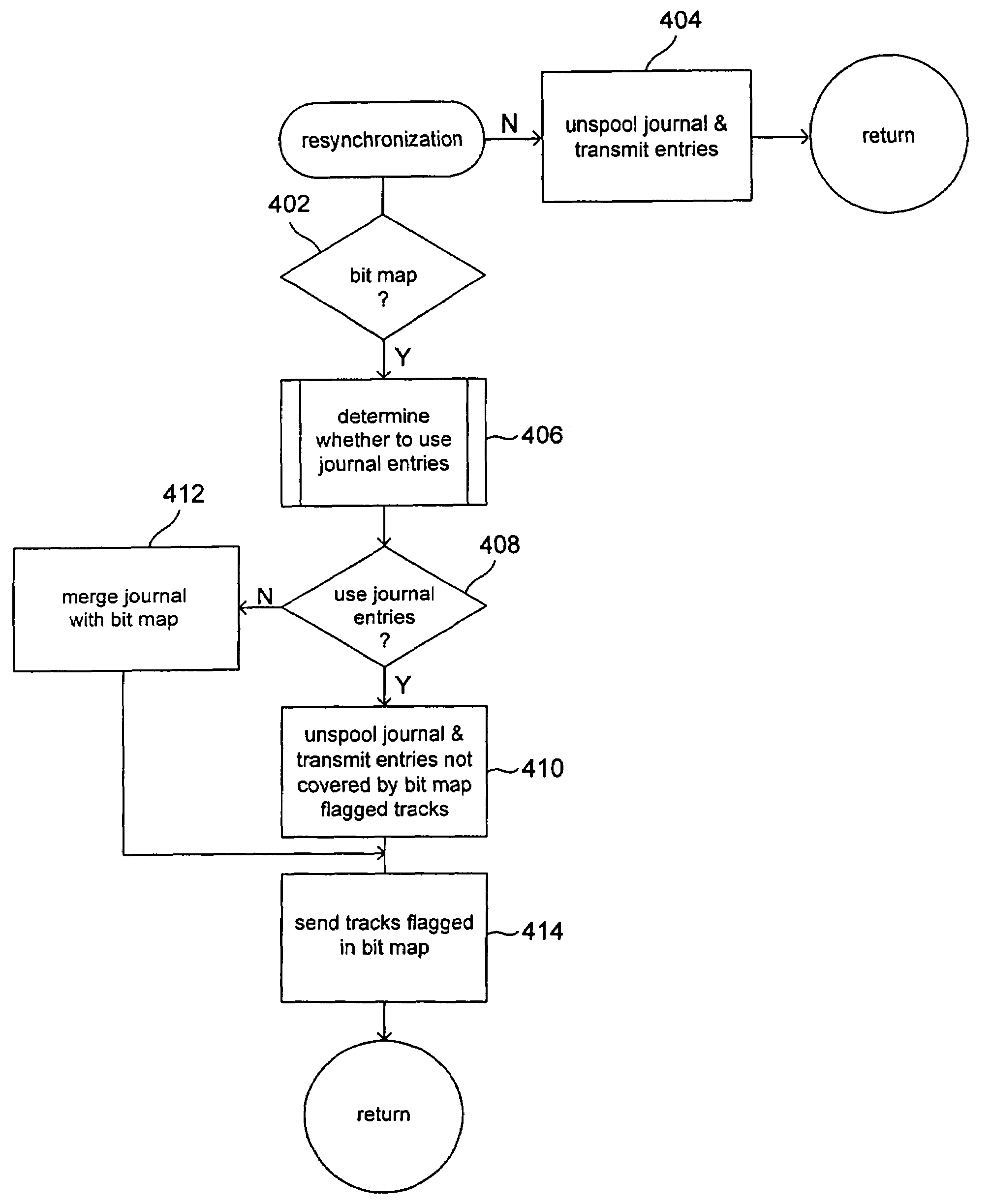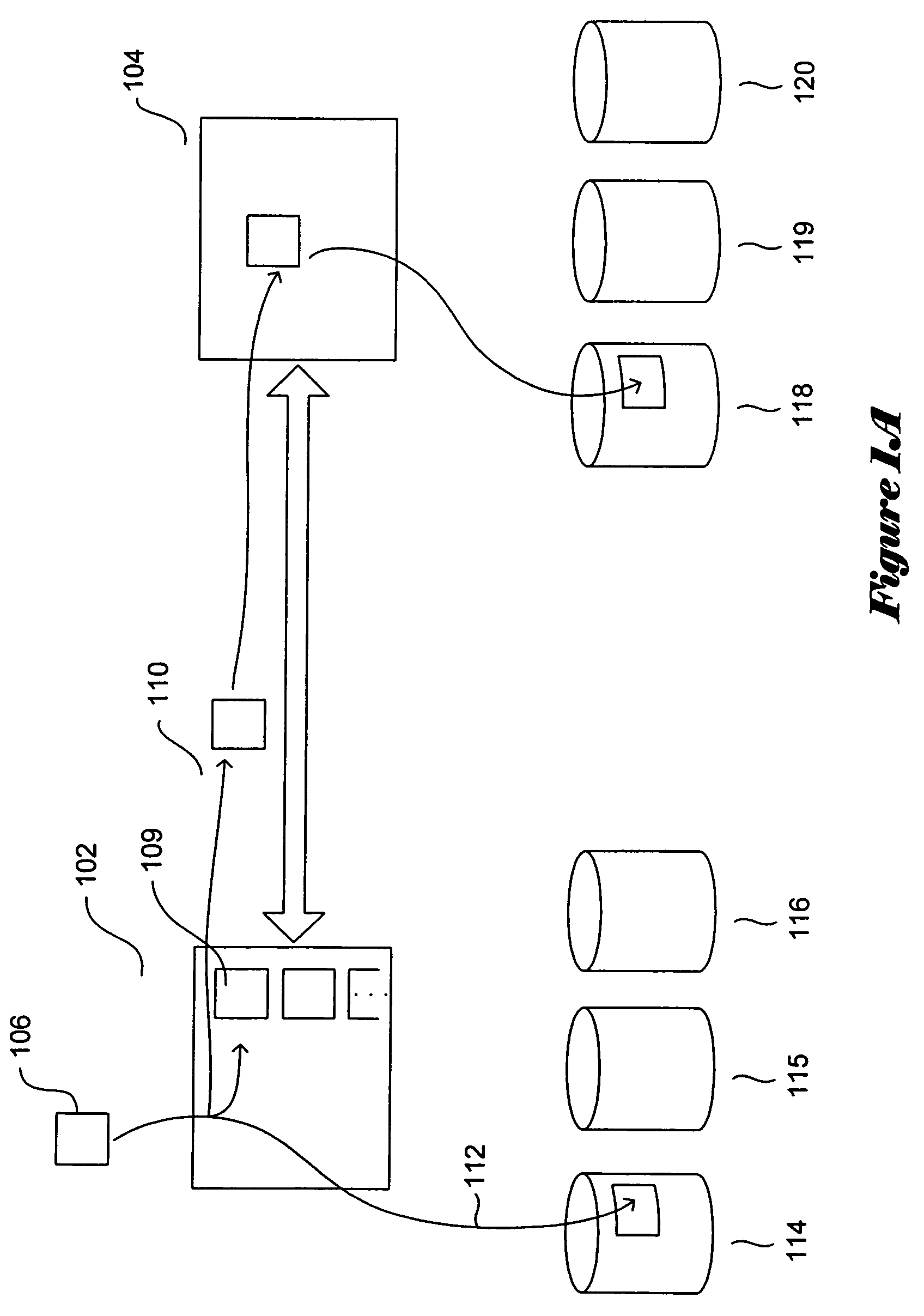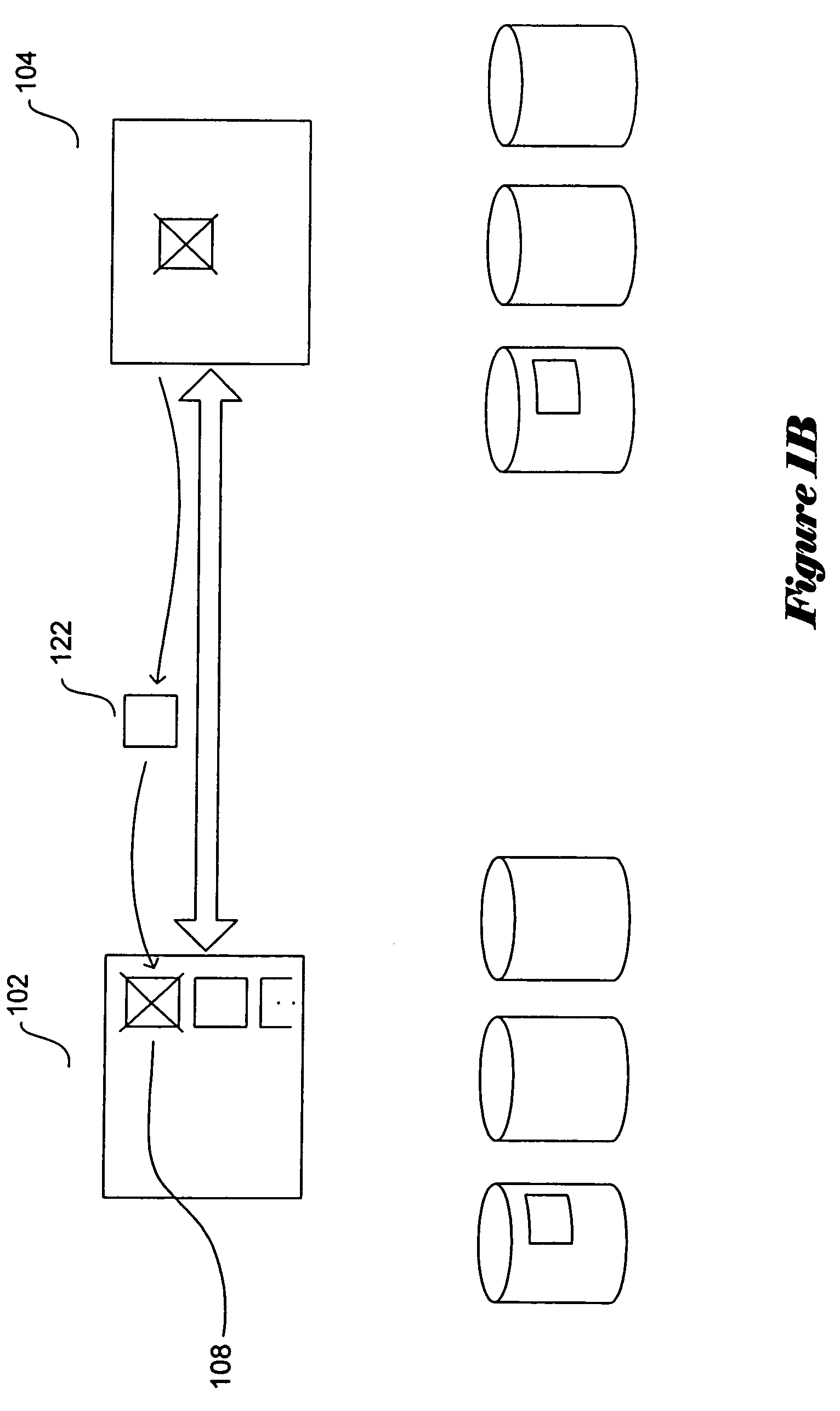Method and system for efficient journal-based resynchronization
a journal-based resynchronization and efficient technology, applied in the field of journal-based resynchronization, can solve the problems of significant computational and communication overhead, delay, and journal-based resynchronization, and achieve the effect of reducing the overhead of resynchronization computation and communication, and avoiding the delay of resynchronization
- Summary
- Abstract
- Description
- Claims
- Application Information
AI Technical Summary
Problems solved by technology
Method used
Image
Examples
Embodiment Construction
[0012]Method and system embodiments of the present invention are directed to enhanced journal-based resynchronization that provides greater computational, communications, and time efficiencies, in certain cases, than are provided by existing journal-based resynchronization. FIGS. 1A-B illustrate a fault-tolerant, highly available, or other system that serves as a context for discussion of conventional journal-based resynchronization and the enhanced journal-based resynchronization that represents an embodiment of the present invention. The system illustrated in FIGS. 1A-B may be a computer system, data-storage system, or another hybrid system that redundantly stores data in order to achieve a desired level of fault tolerance, high availability, or for other reasons. The system comprises a first, primary component system 102 and a second component system 104. The primary component system receives WRITE requests, such as WRITE request 106, from one or more remote host computers, remot...
PUM
 Login to View More
Login to View More Abstract
Description
Claims
Application Information
 Login to View More
Login to View More - R&D
- Intellectual Property
- Life Sciences
- Materials
- Tech Scout
- Unparalleled Data Quality
- Higher Quality Content
- 60% Fewer Hallucinations
Browse by: Latest US Patents, China's latest patents, Technical Efficacy Thesaurus, Application Domain, Technology Topic, Popular Technical Reports.
© 2025 PatSnap. All rights reserved.Legal|Privacy policy|Modern Slavery Act Transparency Statement|Sitemap|About US| Contact US: help@patsnap.com



